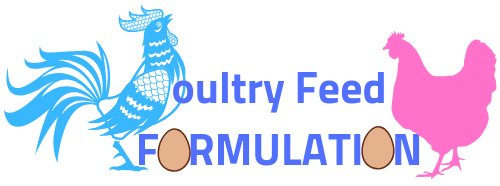One of the main problems with feed management that farmers and manufacturers often grapple with is that of the growth of molds in poultry feeds. The mold growth is not only toxic but it also depletes the nutritional content of the poultry feed.

The growth of mold can negatively impact all aspects of your poultry production ventures ranging from the quality of the processed feed to the grain integrity, feed consumption, the animal health as well as the energy and the production levels of your poultry enterprise. The growth of mold in your poultry feeds will push up the cost of production in your enterprise and lower your revenues, whether you are a poultry feed manufacturer or a farmer. It is detrimental to your profitability and competitiveness.
Unfortunately, a lot of the factors that lead to the growth of molds are not easy to regulate. These include factors such as the moisture levels and humidity which must be present in any production system. One easy options of controlling or eliminating the molds is by using the mold inhibitors in your poultry feeds. These will largely prevent them from destroying your feeds.
The Features and Benefits of the Primary Mold Inhibitors
The best mold inhibitors in the industry will help in supporting the animal health by helping preserve the nutrients in the poultry feeds and grains. A high quality mold inhibitor should have the following features:-
- It should effectively prevent the growth of molds.
- It should have milder pungency and less corrosiveness. This will improve the handling of feeds and grains and result in less wear and tear of the equipment used in the enterprise.
- A good mold inhibitor will prolong the shelf life of your feeds and grains.
- It should be able to preserve the nutritional integrity of your poultry feeds as well as that of the grains used as raw materials in poultry feed formulation.
- They will minimize the risk of mycotoxin production in your poultry feeds and grains.
- They will optimize the moisture content of both the grains and the processed feeds.
Reviewing the Performance
Choosing the right high performance mold inhibitor shouldn’t be difficult. There are already very good options in the market especially if you live in a country with a well developed poultry industry. Look for a product that has proven its efficacy and reliability based on the number of buyers recommending it. This is the only you are going to ensure you are using an industry standard mold inhibitor that will satisfy your needs.
Here are some signs that the mold inhibitor you are using is of excellent quality:
- It has undergone multiple trials and proven its efficacy.
- The product trials must test some specific features as well as capabilities of the mold inhibitor such as its efficacy, product variations, comparison between the inhibitor and other competing products in the marketplace as well as feed-specific reactions and solutions.
- Choose a mold inhibitor that will best suit your unique needs and situations. This will ultimately depend on the type of livestock that you are raising. There are mold inhibitors that are uniquely suited for poultry raising, for example.



Tzgjta where can i buy plaquenil Viagra Super Aktiv Uwkkkv